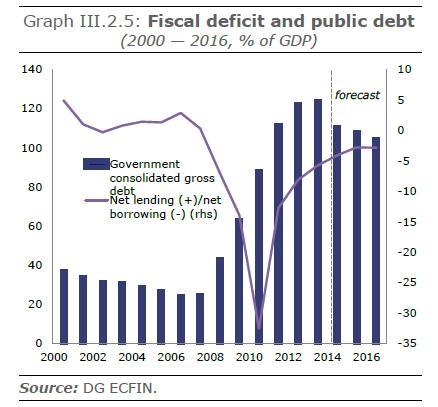European Commission, (2015), “Quarterly Report on the Euro Area”, European Economy, Volume 14, Νο 3, October
This focus section compares the euro area recovery since the global financial crisis to two benchmarks: i) its recoveries from other major recessions and ii) the recoveries of other advanced economies since the global financial crisis. This twin perspective helps to draw some stylised facts about the current recovery and to better understand its particularities. Overall, the results indicate that the current recovery is weak both by the euro area own historical standards and in comparison with the recent recovery in other advanced economies, even those hit by systemic banking crises. The weakness has both structural and cyclical features. On the demand side, investment, both residential and nonresidential, emerges as a key source of weakness in activity. The analysis also points to weaknesses in the euro area’s labour market adjustment process. Due to slow growth, the euro area has also progressed less rapidly than other advanced countries hit by banking crises in tackling legacies of the crisis such as excessive private sector debt. Macroeconomic imbalances accumulated before the crisis and the incomplete architecture of the Economic and Monetary Union at the time have both aggravated the impact of the global financial crisis, transforming it into a sovereign crisis marked by damaging feedback loops between banks and sovereigns and sudden stops in capital flows. This has constrained macroeconomic policies and led to a less supportive macroeconomic policy response than in other advanced countries. In addition, repair of bank balance sheets has been comparatively slower than in other countries hit by systemic banking crises.
Relevant Posts




